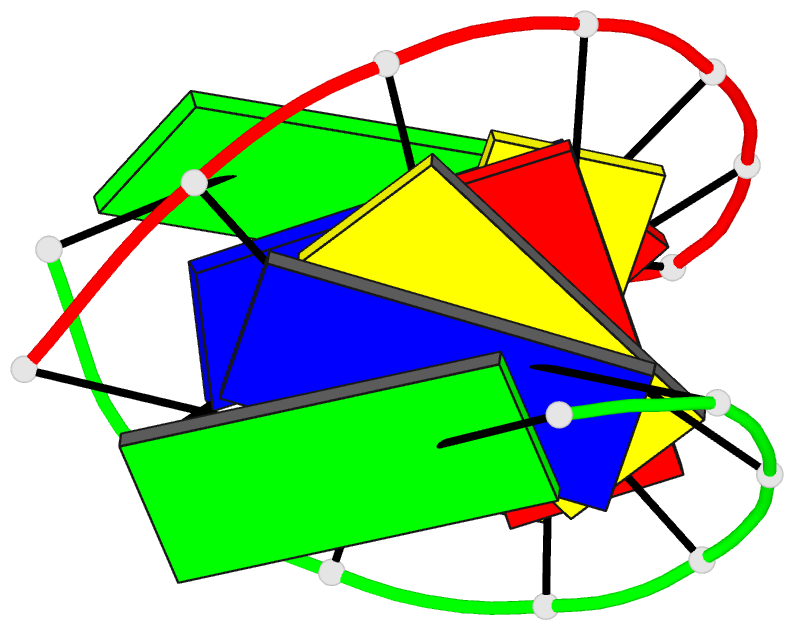Summary information and primary citation
- PDB-id
-
124d;
SNAP-derived features in text and
JSON formats
- Class
- DNA-RNA hybrid
- Method
- NMR
- Summary
- Structure of a DNA:RNA hybrid duplex: why rnase h does
not cleave pure RNA
- Reference
-
Fedoroff OY, Salazar M, Reid BR (1993): "Structure
of a DNA:RNA Hybrid Duplex. Why Rnase H Does not Cleave
Pure RNA." J.Mol.Biol.,
233, 509-523. doi: 10.1006/jmbi.1993.1528.
- Abstract
- The solution structure of the DNA:RNA hybrid duplex
d(GTCACATG):r(caugugac) has been determined by means of
two-dimensional nuclear Overhauser effect (2D-NOE) spectra,
restrained molecular dynamics and full-relaxation matrix
stimulation of the 2D-NOE spectra. The DNA:RNA hybrid
duplex assumes neither an A-form nor a B-form structure in
solution, but an intermediate heteromerous duplex
structure. The sugars of the RNA strand have a normal
N-type C3'-endo conformation, but the DNA strand sugars
have neither N-type nor S-type conformations; instead, they
have an unexpected intermediate O4'-endo conformation. The
negative x-displacement, as well as the small rise and
positive inclination of the base-pairs, resembles A-form
morphology but the minor groove width is intermediate
between that of A-form and B-form duplexes. Both the DNA
and RNA strands show prominent sequence-dependent
variations in their helical parameters. Combined analysis
of NOE and J-coupling data indicates that the DNA sugars
are not in a dynamical two-state equilibrium. The detailed
three-dimensional structure of this DNA:RNA hybrid molecule
leads to a proposed model for its interaction with RNase H.
Several specific structural features of the enzyme
complexed with the hybrid duplex appear to explain the
mechanism whereby RNase H discriminates between DNA:RNA
hybrid duplexes and pure RNA:RNA duplexes.





